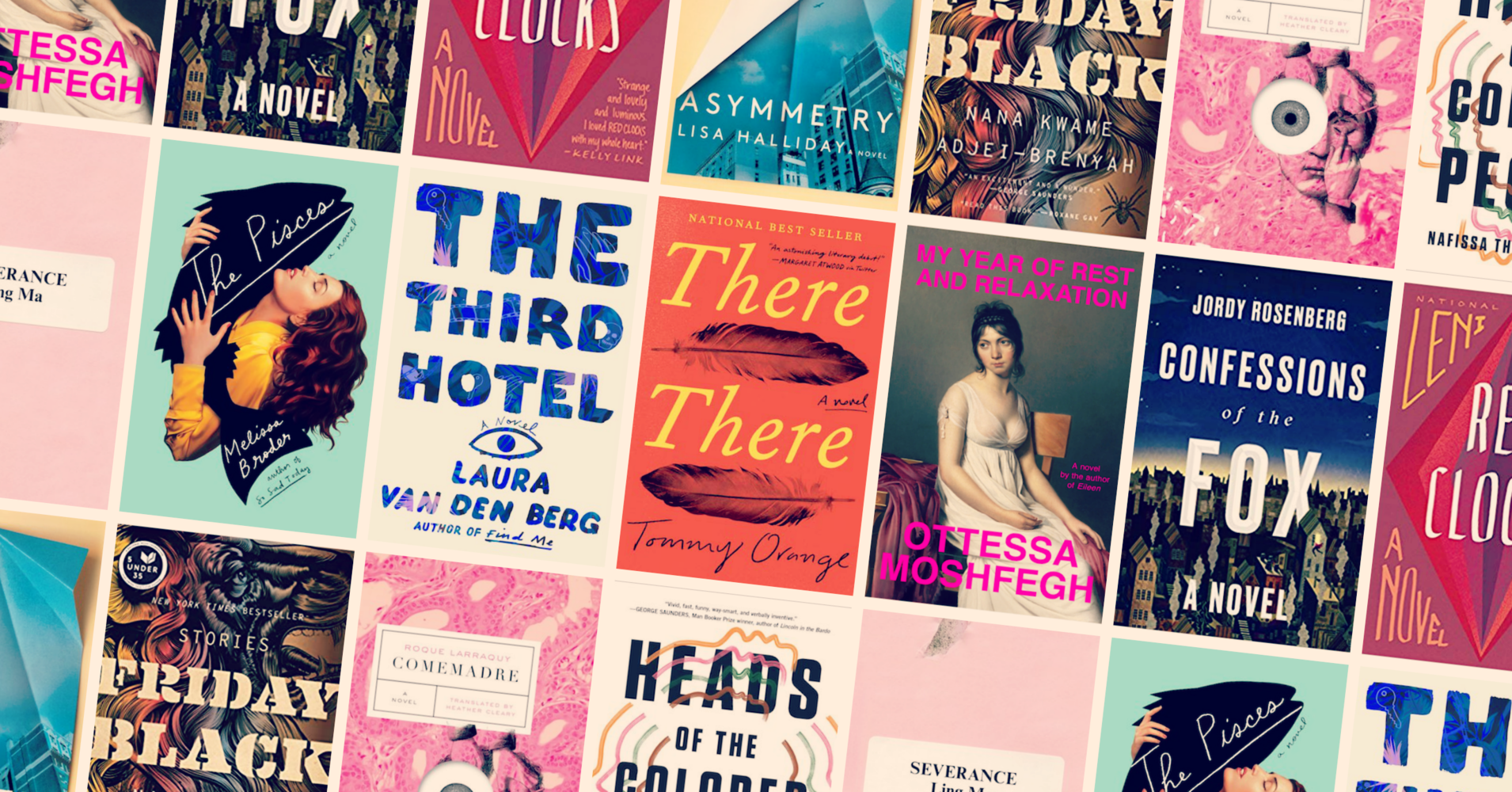[ad_1]
This has been another tough year in a string of tough years.
At first critics claimed we needed literature more than ever, but sometimes it has felt too easily forgotten. Like many, I have worried that political horror has made me cold and bitter; in the past 12 months, cynicism has seemed to bleed into every facet of life. The relentless churn of mini- and mega-scandals has proven a constant distraction from deep reading. Over the course of 2018, I often found myself impatient with a novel I could perhaps have been charitable toward, and I wondered whether this was my fault or the book’s.
Literature bears a heavier burden in times of widespread anxiety; it’s harder to distract us from our misery, even when we crave that escape. We worry that it’s immoral to even waste time on art at a time when reality needs our attention. We wonder if books should also be offering us answers, if they should be “necessary” and “urgent” as well as entertaining or profound.
As I looked back on my year, I remembered all these months of frustrated reading. But I also remembered, thankfully, that it was not all frustration. I read so many books that surprised me with joy, that dazzled and enriched me ― most of all, my 11 favorite fiction works of the year. The year brought so many more novels and short story collections I wish I’d had time to read (not to mention all the poetry and nonfiction). But of those I did, these are the ones that stuck with me most determinedly.
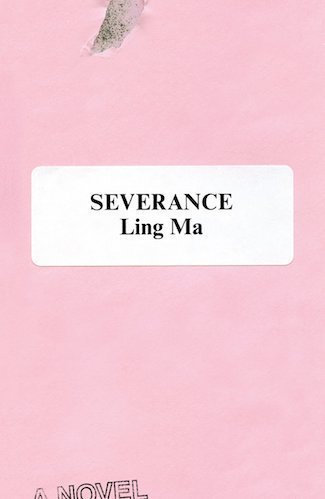
11. Severance by Ling Ma
Before the pandemic sweeps through New York City, leaving it empty save for the zombified husks of the sick, Candace Chen’s boyfriend tells her he can see the future. “The future is more exponentially exploding rents,” he says, and more chain stores. He’s leaving the city for a more wholesome existence, and when she decides to stay and keep her job overseeing the production of Bibles in Chinese factories, their relationship ends. His capitalist nightmare vision of the future turns out to be wrong. Instead, people start dying from a virus spread from Asia. Candace becomes one of the few survivors, at first continuing to commute to her empty office and maintaining an eerie photo blog of the barren metropolis. Then she joins a band of survivors led by a charismatic leader who claims to be guiding them to a refuge in the Midwest. With exquisite pacing, Ling Ma alternates between Candace’s precarious present and her childhood as the daughter of Chinese immigrants, and contemplates the possibility of a future in a lonely, blasted world. Severance is a scathing portrait of a society collapsing under its own ungovernable appetites, as well as a haunting meditation on family inheritance and its loss.

10. Red Clocks by Leni Zumas
Around this time last year, I read a couple of feminist dystopias that barely even felt speculative. One was Louise Erdrich’s searing, if too-short, 2017 novel Future Home of the Living God. The other was Zumas’ Red Clocks, a novel set largely in the near-future Pacific Northwest. Those Personhood Amendments we keep hearing about in state legislatures have become a national reality, and abortion and in vitro fertilization have been outlawed. Four women ― a high school teacher working on a biography of a female polar explorer, a pregnant teenager, an unhappy stay-at-home mother and a reclusive herbalist ― with intersecting paths navigate the sudden restrictions this has placed on them. The biographer, a single woman who wants to get pregnant, faces a ticking clock in her dream. The teenager, a cosseted daughter and gifted student, wants academic opportunities, not motherhood. These women ache for what the others unwillingly have, and have few options for following their own desires, imprisoned by politics and biology. Like other dystopias, the most unsettling thing about Zumas’s poignant, poetic novel is the degree to which it’s already true.
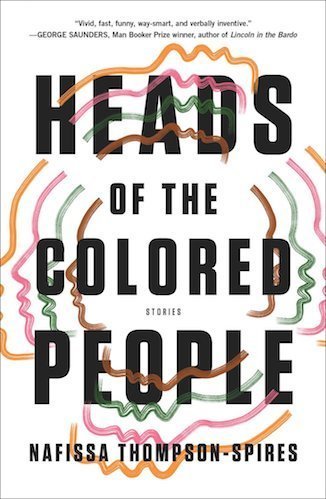
9. Heads of the Colored People by Nafissa Thompson-Spires
In the 1850s, black abolitionist James McCune Smith published a series called “Heads of the Colored People,” sketches that critiqued racist scholarly approaches like phrenology and positively depicted working-class black subjects. These works inspired Thompson-Spires’s sharp collection, which largely follows middle-class black men and women in majority-white spaces, mapping the interior exhaustion and scarring they incur and the fraught social interactions they navigate.
Many of the stories, like “Belles Lettres,” an epistolary exchange between the mothers of a little girl and her bully, the only black girls in their class at an upscale California school, are laugh-out-loud funny. Others, like the first story, “Heads of the Colored People: Four Fancy Sketches, Two Chalk Outlines, and No Apology,” are gut-wrenching. Thompson-Spires author repeatedly confronts the insufficiency of art to rectify the trauma caused by racism, and plays with the asymmetric yet universal roles of audience, creator and subject. Her pitch-perfect prose makes her explorations of race, class, gender and self-presentation sing.
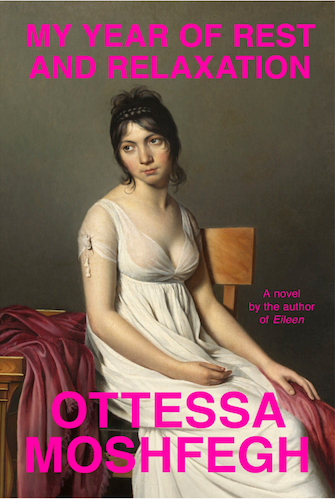
8. My Year of Rest and Relaxation by Ottessa Moshfegh
Since publishing her breakout noir thriller Eileen, Moshfegh has abandoned the genre but published two works of fiction in the same unmistakably distinctive voice. Both in her short fiction and in her two novels, Moshfegh excels at showing readers the world through the eyes of contemptible characters; her narrators are callous, vain, cruel, cynical and self-loathing. My Year of Rest and Relaxation’s unnamed narrator, a wealthy and beautiful orphan, is of the narcissistic variety. Bored with the life of a gorgeous gallery girl in Manhattan and in denial about her grief for her late parents, she increasingly withdraws from the world over the course of the book, hoping to heal her mind with constant sleep. She’s aided by an eccentric, amoral psychiatrist who prescribes her a veritable pharmacy of sleep aids, and a famous installation artist who becomes involved with her scheme to sleep continuously. Only her best friend, Reva, tries to snap her out of it, but the narrator semi-secretly despises her gum-chewing, diet soda-drinking, social ladder-climbing buddy. Moshfegh’s tale of self-care gone off the rails is a caustically funny skewering of artistic pretension and consumption, but also a meditation on grief, privilege and social cohesion.
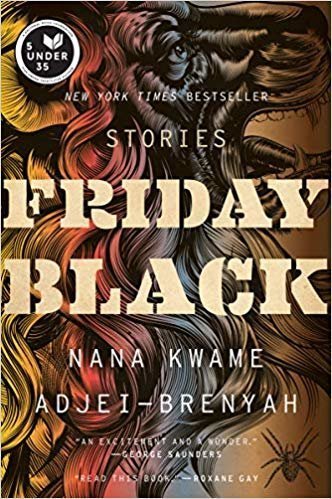
7. Friday Black by Nana Kwame Adjei-Brenyah
Friday Black was a rare thing for me: a short story collection that I kept putting down for a little while, then wanting to return to. Often I rely on momentum for collections, absent the tug of a narrative thread to pull me through. But Adjei-Brenyah’s debut collection asked for a different rhythm ― to set it down, allow myself to digest each story, and then to return with eager curiosity for what he might have come up with next.
The book opens with the provocatively brutal “Finkelstein 5,” about a movement of retributive violence in response to a white man’s acquittal from charges after he massacred five black children with a chainsaw. (They had, it was stated in his defense, been loitering at the time.) “Zimmer Land” takes another angle, depicting a theme park where white clients get to play at shooting black men outside their homes or taking down Muslim “terrorists.” In “The Hospital Where,” the author turns this laser beam on fiction itself, on the strange exercise of creating art or entertainment out of the suffering of people. Often surreal and speculative, Friday Black constantly and inventively probes at the questions of what we owe to each other and how our white capitalist system works against humane relationships.
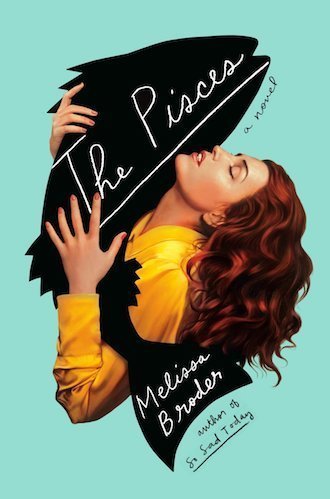
6. The Pisces by Melissa Broder
Don’t be fooled by the Disney-worthy cover: “The Little Mermaid” this isn’t. Broder’s fiction debut follows an aimless academic who takes a break from her endless dissertation work (her subject is Sappho) and her meltdown over a recent ex to dogsit for her sister and brother-in-law in Venice Beach. While there, she attends court-mandated group therapy for her love and sex addiction; meanwhile, she’s feeding the addiction with underwhelming Tinder hookups. Then, a glimmer of hope: She falls for a gorgeous merman who catches sight of her during evening walks along the beach. He seems different from human men ― devoted, dedicated to her pleasure. Broder’s blunt, almost deadpan prose both evokes the simple stitching of a fairy tale and undoes that simplicity, beckoning readers to take a less credulous view of the romantic stories we tell ourselves. The Pisces is a timely assessment of gender relations, but also a timeless meditation on our frequently dysfunctional relationships with ourselves, our desires and others.
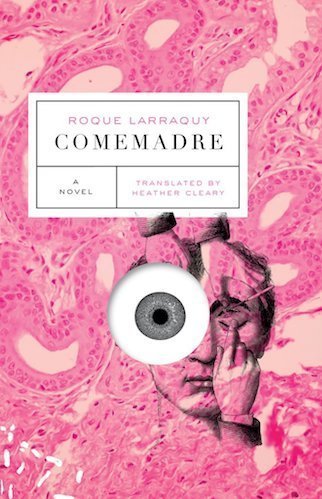
5. Comemadre by Roque Larraquy
“There are people who don’t exist, or who barely do,” begins Roque Larraquy’s novel Comemadre, “like Ms. Menéndez.”
Spare but unsettling, the line immediately immerses the reader in Larraquy’s world of matter-of-fact horror. The first half of this slim book is set in a sanitarium outside Buenos Aires around the turn of the 20th century. The doctors there learn about a theory that human brains may continue functioning for up to nine seconds after decapitation; under the auspices of administering an experimental treatment for terminal cancer, they begin to test this premise. The second half, set in Buenos Aires in 2009, follows an artist’s rise from childhood drawing prodigy to a headline-making career as an edgy installation artist who works with human body parts. Through his callous, narcissistic narrators, Larraquy interrogates the ethics of art and science, and the inhumanity we sanction in the name of intellectual achievement. Slyly funny and viscerally affecting, in a fluid translation by Heather Cleary, Comemadre is the medicine-meets-art horror story of my dreams.
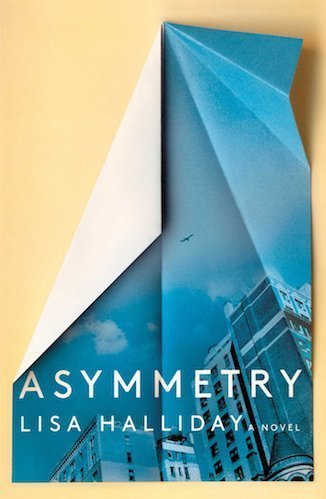
4. Asymmetry by Lisa Halliday
A young woman named Alice sits on a bench in New York City, trying to read a book, when an elderly man eating a Mister Softee ice cream cone strikes up a conversation with her. The man, Ezra Blazer, is a famous author (shades of Philip Roth), while she’s an editor at a publishing house and an aspiring writer herself. In the first section of Halliday’s unassuming yet ambitious debut, this pair embarks on a mentorship-slash-romance; she narrates their imbalanced but seemingly happy relationship from a restrained third person, offering equally minimal access to both Alice’s and Ezra’s interiors. In the second section, an Iraqi-American economist named Amar looks back on his life in the hours after being detained during a layover in Heathrow. Halliday delves deeply into his perspective as he remembers his childhood and frets about the disappearance of his brother, a doctor in Iraq. The third and final section is a slim coda to the first. Technique isn’t enough to make a novel great, but Asymmetry’s technique is remarkable; its prose is crystalline, its structure architecturally precise, and its characters almost photorealistic. Halliday marshals all these tools to experiment with the capacity of artistic imagination and empathy in a novel as thoughtful as it is beautifully executed.
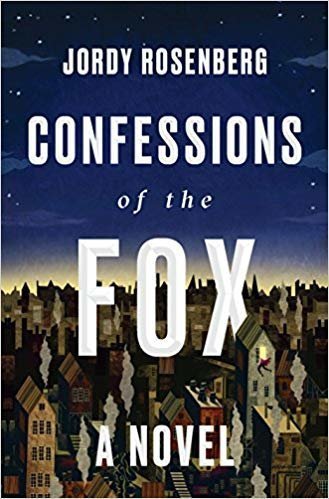
3. Confessions of the Fox by Jordy Rosenberg
To write a novel that is simultaneously a historical novel, a romance, a political manifesto, an academic metafiction and a critique of the novel form itself is a staggering challenge. The most incredible thing about Confessions of the Fox, Rosenberg’s debut novel, is that it succeeds. A sexy, swashbuckling, anti-capitalist and anti-colonialist adventure tale about the life of legendary pickpocket and jailbreak Jack Sheppard, the book is a rollicking good read and also a challenging one. Rosenberg’s book engages with the canon while unpicking it, seeking to recover a diverse 18th-century London filled with trans and gay people, black and brown people, and monitored by a cruel, unjust law enforcement system interested only in protecting and annexing wealth. Exhaustively researched, meticulously considered and luminously written, Confessions of the Fox lingered in my mind long after I turned the last page.

2. There There by Tommy Orange
Tommy Orange’s ambitious debut, a novel of urban Native American life, opens with a polemic and is narrated by an ensemble. He sets his political intentions from the very first line; in the prologue, he retraces the history of genocide, exploitation and oppression that marked Native history beginning with the arrival of white colonizers centuries ago. Though most Native Americans now live in cities, not on reservations, many non-Natives fail to conceive of them as even existing outside of stereotype-riddled cultural myths.
“Getting us to cities was supposed to be the final, necessary step in our assimilation, absorption, erasure, the completion of a five-hundred-year-old genocidal campaign,” Orange writes. “But the city made us new, and we made it ours.”
In There There, Native and part-Native narrators, mostly living in and around Oakland, tell their own interlocking stories, each voice as clear and sharp as a diamond, as the action builds toward a massive powwow at the Oakland Coliseum. As relentlessly paced as a thriller, psychologically capacious and powerfully written, There There delivers on every level.
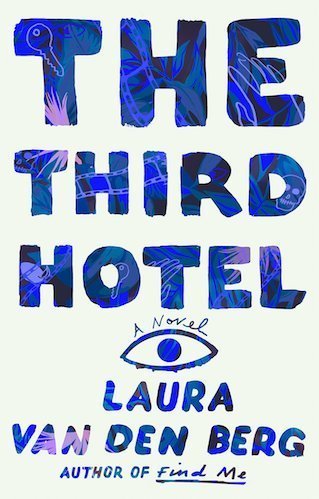
1. The Third Hotel by Laura van den Berg
In the opening pages of The Third Hotel, van den Berg’s second novel, a traveling elevator inspector named Clare sees her husband on the street in Havana. The problem with this is that her husband is dead. That’s actually why she’s in Havana; he was a horror movie scholar who was meant to be there for a film festival, and she decided to attend in his stead after his sudden death. Instead of finding salve, or closure, she realizes she’s “experiencing a dislocation of reality.” As she and her late husband’s specter haunt the city, she tries to come to grips with their marriage, her childhood and her increasingly fuzzy sense of self. In evocative, lucid prose, van den Berg conjures the psyche of a woman unmoored, and examines how marriage and solitude, travel and domesticity, and other forces create and stabilize our identities. The Third Hotel is dense with everything that makes a novel memorable: psychological complexity, sensory vividness, narrative tension and ideas about humanity and art.
[ad_2]
Source link

